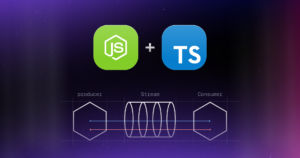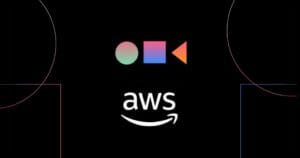Key Takeaways
- Mobile phones operate as two-way radios, transmitting and receiving radio waves through antennas to facilitate communication.
- Modern mobile phones utilize cellular networks, which are more complex than older radio communication systems. These networks use a series of distributed towers, or cells, each assigned a set of frequencies to transmit and receive signals.
- To avoid interference, cells can reuse the same frequencies as long as they are not adjacent. This cellular approach allows conversations to be carried across cells, enabling long-distance communication.
- Security measures, such as Subscriber Identity Modules (SIM cards), are used to prevent unauthorized use of mobile networks. These SIM cards store vital data that allows a phone to receive and transmit calls.
Mobile phones have become a ubiquitous part of modern life. It is estimated that there are over five billion cell phones currently in use, covering a large portion of the world’s population. However, most people who use mobile phones do not understand how they work. This article demonstrates how a combination of sophisticated radio technology and computer security create the mobile phone systems many take for granted.
The first thing to understand is that underneath the long-distance capabilities, elaborate touch interfaces, and other bells and whistles, modern mobile phones are essentially nothing more than two-way radios. Therefore, to understand how mobile phones work, one must first understand how radio works.
A radio antenna is a device which turns radio waves into electric currents that can then be processed into sound by a radio receiver. Additionally, it can do the opposite, and convert existing electronic audio signals into transmitted radio waves that other antennas can receive. When a mobile phone transmits audio, it applies an oscillating electric current to the mobile phone antenna. The mobile phone antenna then emits corresponding electromagnetic waves, which are also known as radio waves. To receive calls, the mobile phone antenna intercepts an electromagnetic wave of a particular frequency. Its terminal then receives a minuscule amount of voltage, which is amplified and converted to sound by other components.
Through the process explained above, mobile phone antennas transmit signals to radio towers and receive signals back simultaneously. However, the technology that enabled such sophisticated use of radio signals was developed gradually over many decades.
The closest predecessors of mobile phones were the radios installed in truckers’ vehicles that allowed them to communicate while on the road. Because the radios were so large and heavy, they were impractical for consumer use. These mobile communication systems tended to use one central antenna in each city they serviced. Only a few dozen channels were available on each tower. Therefore, the system wouldn’t work if too many people were trying to use it at once. Also, because the system was only half-duplex, only one party could talk at any given time. This need to be brief and one-way led to some interesting lingo, but it wasn’t very convenient for the average person to use.
Modern mobile phones, in contrast to the portable radio communication systems of old, use cellular networks. Cellular networks are also radio networks, but they are far more sophisticated than the simple local towers that powered old radio communication systems. In a cellular network, the towers are distributed over portions of land called cells. These cells are usually hexagonal in shape, but they can also be square or circular. Each cell of land contains at least one radio tower.
Each cell is also assigned a number of frequencies which correspond to radio base stations. Other cells can use the same frequencies as long as they are not adjacent. In other words, use of the same frequency must be spaced at least one cell apart. This is done to avoid interference between calls whose signals use the same frequency. This ability to reuse frequencies is the key to the cellular network’s power; far more people can make calls across the network, and over longer distances. Whereas single-transmitter systems cannot reuse the same frequency, cellular networks can use the same frequency in multiple areas for different transmissions, as long as the transmissions are not close enough to cause interference. Because of the cellular approach, conversations can be carried across cells, making it easy to talk to people who are across the country. Additionally, these systems are full-duplex, which means the phone sends and receives a signal at the same time. This makes it possible for people to talk and listen at the same time, and thus to carry on a conversation in the manner to which they are accustomed.
The concept of a cellular network is not limited to mobile phones, but mobile phone networks are an especially sophisticated kind of cellular network. Cellular transmitters and handsets can change frequency under guidance of automated computer systems that find the optimal ranges to avoid interference. They generally have 800 different frequencies available for each cluster of adjacent cells. Because of the nature of wavelengths, lower-frequency waves travel longer without being broken up by atmospheric noise. This principle holds true for mobile phone signals. Lower-frequency clusters are better for long distances, whereas higher-frequency are better for dense areas. Therefore mobile phone signals rural areas tend to use relatively low frequencies, and in urban areas they use high frequencies.
In cities each cell site typically covers half a mile. In rural areas, they tend to cover about five miles. However, this is not the true limit of modern mobile phone reception. Given circumstances in which there is no interference or blockage, it is sometimes possible to receive a signal from a cell site 25 miles away. Mobile phones also tend to use low power transmitters to avoid interference between calls in compactly arranged cells. Each cell site is connected to telephone switches, which allows for calls to be made from cell phones to the public telephone network.
Many different standards have been established for how mobile phone networks are supposed to communicate and coexist with each other. Currently, the most popular mobile phone communication standards are GSM and CDMA. A new high-speed standard called LTE is being introduced in populous areas.
To counteract unauthorized use of their networks, mobile phone providers have introduced security measures that do not allow a phone to receive and transmit calls without certain valid data. This data is usually stored on small microchips called Subscriber Identity Modules, or SIM cards for short. The data they carry is known as the service-subscriber key. The technical name for this data is the International Mobile Subscriber Identity. This is used to gather information about the mobile country code, the mobile network code, and the mobile station identification number of the phone. It also carries an authentication key. SIM cards are most commonly used in phones that are intended for GSM networks. Many phones built for CDMA networks do not use removable cards, and instead embed the security information permanently in memory. However, “world” phones that can handle both communication protocols include SIM cards.
By sending and receiving radio signals through a vast interconnected network, mobile phones can make calls almost anywhere in developed countries, over distances of thousands of miles. Mobile phones are a wonder of modern technology.
Frequently Asked Questions (FAQs) About How Mobile Phones Work
How Do Mobile Phones Convert Voice into Signals?
Mobile phones convert voice into signals using a process called modulation. When you speak into your phone, the microphone picks up the sound waves and converts them into electrical signals. These signals are then modulated into radio waves by the phone’s transmitter. The radio waves are sent to the nearest cell tower, which then transmits them to the recipient’s phone. The recipient’s phone demodulates the radio waves back into electrical signals, which are then converted back into sound waves by the speaker.
What Role Does a SIM Card Play in a Mobile Phone?
A SIM card, or Subscriber Identity Module, is a small chip that stores information about the mobile phone user. It contains a unique serial number, the International Mobile Subscriber Identity (IMSI), and other user data. The SIM card allows the phone to connect to the mobile network and enables the user to make calls, send messages, and use data services.
How Does a Mobile Phone Connect to the Internet?
Mobile phones connect to the internet using either a Wi-Fi network or a cellular network. When connected to a Wi-Fi network, the phone communicates with a router, which is connected to the internet. When using a cellular network, the phone connects to the internet via the nearest cell tower, which is linked to the internet through a wired network.
How Does a Mobile Phone Use GPS?
GPS, or Global Positioning System, is a satellite-based navigation system that provides location and time information. A mobile phone uses GPS by receiving signals from multiple GPS satellites. The phone calculates its distance from each satellite and uses this information to determine its exact location.
What is the Role of the Operating System in a Mobile Phone?
The operating system (OS) is the software that manages the hardware and software resources of the mobile phone. It provides a user interface, manages files and applications, and controls the phone’s communication functions. The OS also ensures that different applications and processes run smoothly and efficiently.
How Does a Mobile Phone Store Data?
Mobile phones store data in two main ways: internal storage and external storage. Internal storage is built into the phone and is used to store the operating system, applications, and user data. External storage, such as a microSD card, can be added to increase the phone’s storage capacity.
How Does a Mobile Phone Charge Its Battery?
A mobile phone charges its battery using a charger that converts AC power from a wall outlet into DC power. The charger sends this power to the phone’s battery, which stores it as chemical energy. The phone then converts this energy back into electrical energy to power its functions.
How Does a Mobile Phone Use Bluetooth?
Bluetooth is a wireless technology that allows mobile phones to connect to other Bluetooth-enabled devices, such as headphones, speakers, or another phone. The phone and the other device pair and exchange data over a short-range radio frequency.
How Does a Mobile Phone Use NFC?
NFC, or Near Field Communication, is a technology that allows mobile phones to communicate with other NFC-enabled devices over a very short distance. This technology is often used for contactless payments, data transfer, and reading NFC tags.
How Does a Mobile Phone Use Infrared?
Infrared technology in mobile phones is used for short-range communication between devices. It allows data to be transferred wirelessly over short distances, typically a few meters. However, this technology is less common in modern phones, having been largely replaced by Bluetooth and Wi-Fi.
Chris is a web designer, developer and internet marketer experienced in key web technologies and software. He currently works as online exposure consultant at leading mobile phone antenna and network equipment supplier. Chris also has passions for Android and web performance.







